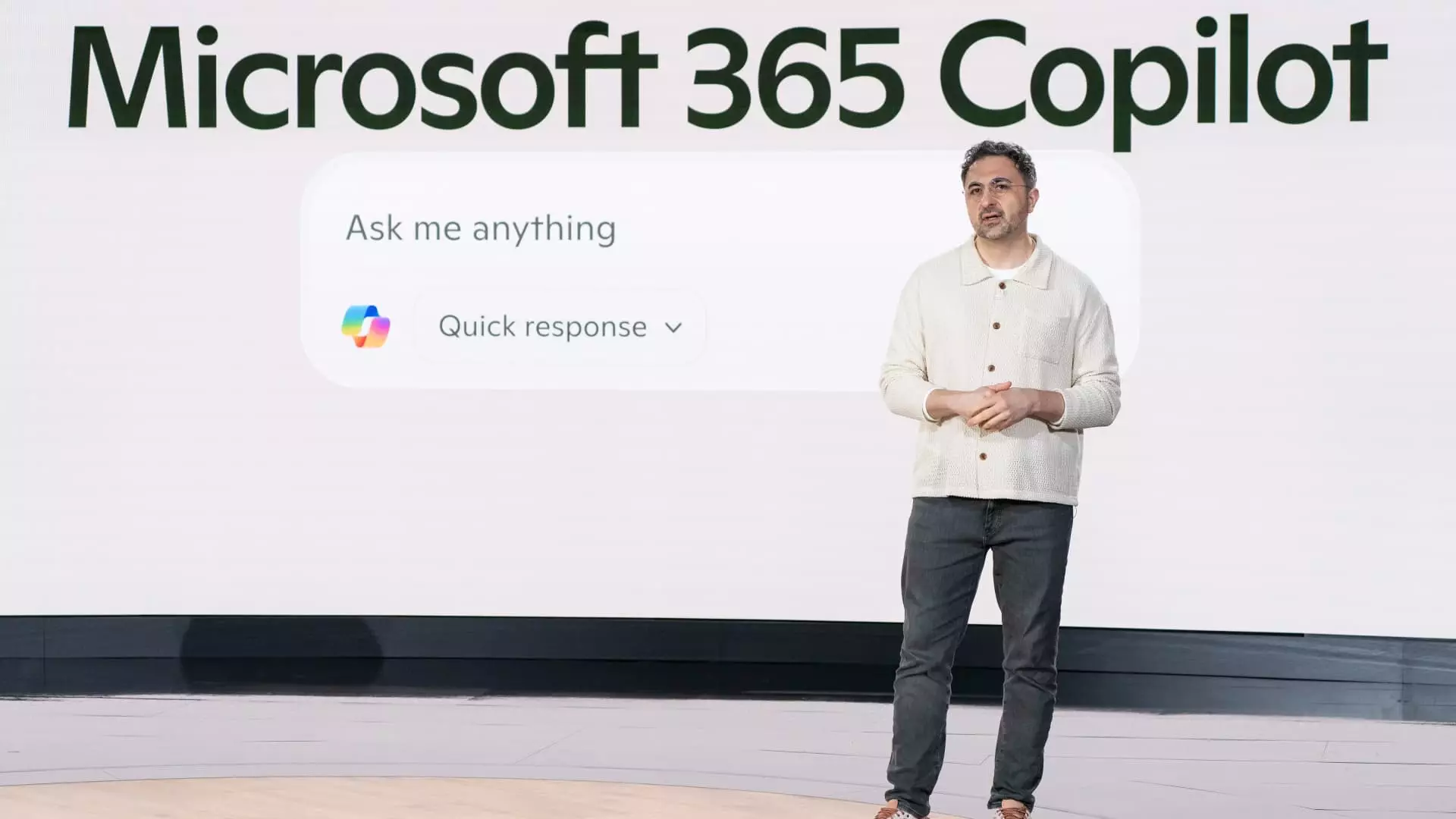In an era characterized by rapid advancements in artificial intelligence, the prevailing narrative often emphasizes the urgency to innovate and lead. However, Microsoft’s approach, as articulated by its AI chief Mustafa Suleyman, diverges sharply from this trend. Instead of plunging headfirst into the development of the latest cutting-edge AI models, Microsoft has chosen a strategy of patience and strategic timing, operating several months behind the frontiers of AI research. This tactic may seem counterintuitive in a hyper-competitive landscape, but it underscores a thoughtful understanding of the market dynamics and technological feasibility.
Suleyman’s insights reveal the merits of adopting a “second mover” strategy which not only minimizes costs but also allows for a concentrated focus on niche applications. By waiting for the initial development phase—where the industry leaders often blaze a trail—Microsoft benefits from observed successes and setbacks, thus facilitating risk mitigation. The off-frontier strategy permits the company to bypass potentially expensive missteps, ultimately delivering refined, efficient products tailored to user needs.
The Reality of Collaboration
In today’s digital ecosystem, partnerships have emerged as the lifeblood of innovation. Microsoft exemplifies this by fostering deep relationships with other organizations to enhance its AI capabilities. Notably, its alliance with OpenAI has been a cornerstone of its strategy, allowing Microsoft to integrate top-tier AI models into products like Bing and Windows without incurring the vast expenses associated with developing these models from scratch. Through its significant investment in OpenAI—totaling approximately $13.75 billion—Microsoft illustrates how strategic partnerships can yield unparalleled benefits, particularly in a field as resource-intensive as AI development.
Moreover, collaborations are no longer confined solely to startups; Microsoft has recently begun leveraging resources from companies like CoreWeave, indicating an adaptive strategy towards resource optimization. This dynamic, collaborative approach reflects a recognition of the evolving nature of technological development, where agility and openness to partnership are paramount.
The Evolution of Product Features
An interesting facet of Microsoft’s strategy is its capability to swiftly integrate new AI features into its products while relying on advancements made by its partners. For instance, Suleyman discussed enhancements to the Copilot feature, including the introduction of memory functionality, which allows the AI to retain vital information about its users. Such features, although inspired by OpenAI’s innovations, signify Microsoft’s agility in making them available to its user base promptly, thus ensuring a competitive edge.
This adaptability in feature deployment contrasts sharply with the slower pace often associated with traditional software updates, further illuminating how partnerships and strategic foresight can bolster a company’s operational efficiency. The emphasis on user-centric features also showcases Microsoft’s commitment to enhancing the customer experience, ensuring that AI serves as a beneficial tool rather than an intimidating novelty.
Navigating a Changing Landscape
However, the journey has not been without its challenges. As the landscape of AI evolves, fissures in relationships can occur; OpenAI’s recent collaborations with Oracle exemplify this potential instability in partnerships that have long been thought of as exclusive. Nonetheless, Suleyman maintains a forward-looking perspective, highlighting the long-term vision Microsoft has for developing its internal AI capabilities while still benefiting from its partnership with OpenAI. This dual approach indicates an understanding that while collaboration is crucial in the immediate context, self-sufficiency will ultimately be essential for sustainable progress.
The statement from Suleyman that “it’s absolutely mission-critical that long-term, we are able to do AI self-sufficiently at Microsoft” captures this balance between collaboration and independence. As AI continues to undergo rapid evolution, the ability to adapt to changing partnerships while investing in internal capabilities might prove crucial for maintaining market relevance and leadership.
Defining the Future of AI at Microsoft
Ultimately, Microsoft’s strategy—which emphasizes a measured approach to AI development driven by partnerships while focusing on optimizing internal capabilities—positions it uniquely in the competitive landscape. This method not only leverages the best technologies available through collaborations but also builds resilience against the pitfalls of overly ambitious undertakings.
As the world looks forward to the next wave of AI innovations, such a balanced perspective could inspire other stakeholders to reconsider their own strategies, potentially leading to a more sustainable and user-oriented AI ecosystem. This nuanced vision for AI development not only amplifies Microsoft’s potential for success but also paves the way for the entire industry to re-evaluate the intrinsic value of patience and strategic planning.

